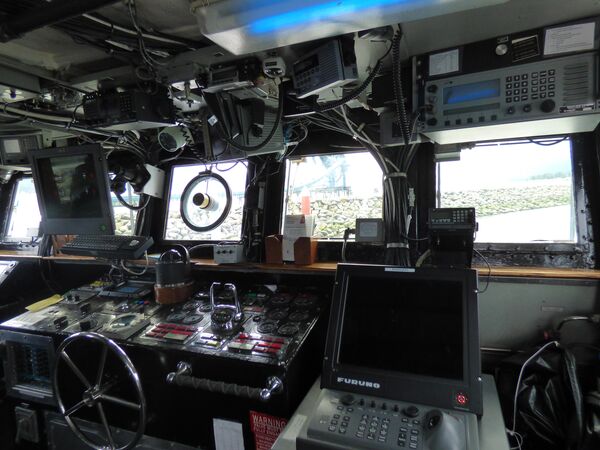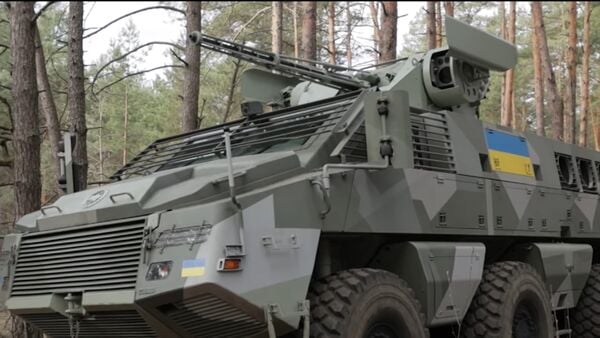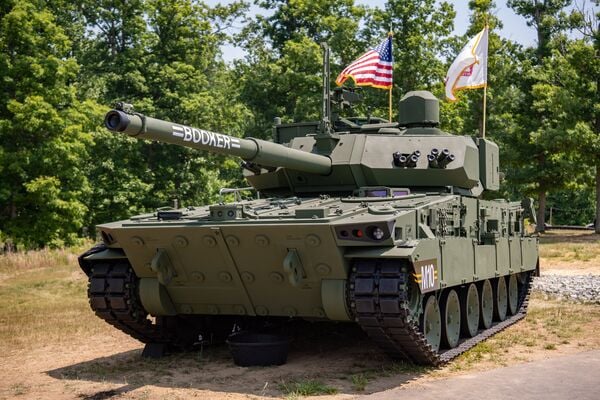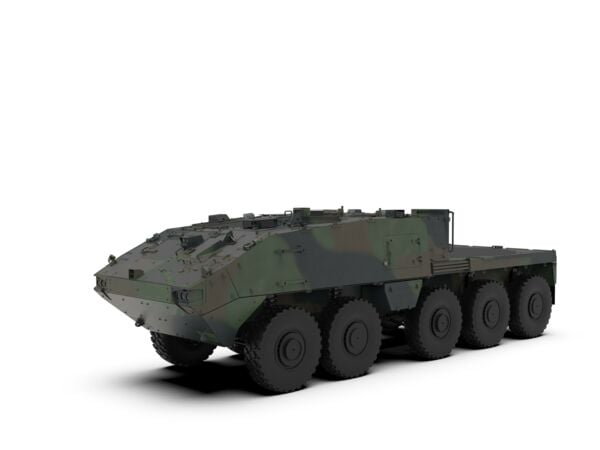- About
- Intara
- Capabilities
- Advisory
- Resources
- News
- Store
USCG faces logistical and operational challenges in Alaska for Island-class patrol forces
09 August 2022
by Michael Fabey


Older navigation and propulsion systems make it difficult for the US Coast Guard to operate and maintain Island-class patrol forces. (Michael Fabey)
To maintain its Island-class boats and continue patrolling the treacherous Alaskan coast, the US Coast Guard (USCG) must overcome logistical and operational challenges, USCG officials told Janes .
The USCG believes it can keep the 110-ft (33.5 m) Island-class boats operational as the service builds and deploys the replacement fleet of Fast Response Cutters (FRCs). The USCG commissioned its first 154-ft (46.9 m) Sentinel-class John McCormick (WPC-1121) on 14 April 2017 in Ketchikan, Alaska.
Eventually the remaining dozen Island-class vessels will be replaced by FRCs, countrywide. Alaska USCG officials are planning to keep patrols going until then.
“I'm very confident we can maintain the 110s beyond their scheduled decommissionings right now,” Commander Timothy Boettner, commander of the Ketchikan USCG base that supports the regional ship needs, told Janes in July.
He said there are three Island-class boats in Western Alaska and two FRCs supported by Ketchikan.
Ukraine unveils Mbombe 6 with Spys ROWS
23 April 2024
by Vishal Sengupta & Sonny Butterworth


Mbombe 6 with Spys ROWS seen in Ukraine. (General Staff of the Armed Forces of Ukraine)
A video released by the General Staff of the Armed Forces of Ukraine on 18 April shows a South African Mbombe 6 6×6 armoured vehicle equipped with a Ukrainian remotely operated weapon system (ROWS).
The video shows the Commander-in-Chief of the Armed Forces of Ukraine, Colonel General Oleksandr Syrskyi, being presented with and inspecting several armoured vehicles, including the Mbombe, at an undisclosed location.
The Mbombe 6 is a wheeled armoured personnel carrier (APC) designed and manufactured in South Africa by Paramount Group, as well as under licence in India, Jordan, and Kazakhstan. The vehicle comes with an all-welded steel armour construction providing protection against small-arms fire up to NATO Standardization Agreement (STANAG) 4569 Level 4 standards.
The vehicle features a mine-resistant honeycomb flat-bottomed hull design, which lowers its overall height and provides protection against a 10 kg anti-tank mine detonated underneath the hull or a wheel station.
Operational testing for M10 Booker planned for July
22 April 2024
by Meredith Roaten


M10 Booker Combat Vehicle (pictured) will be put through its paces at Fort Liberty in boreal summer 2024. (US Army photo by Bernardo Fuller)
One company in the 82nd Airborne Division will be the first unit to perform operational testing on the new M10 Booker combat vehicle in boreal summer 2024 and will then become the first unit equipped if the testing is successful, army leaders announced on 18 April.
Testing at Fort Liberty, North Carolina, will focus on making sure the platform is baseline operational, Major General Glenn Dean, programme executive officer for Ground Combat Systems, told reporters on the sidelines of an army live-fire and commemoration event. Training for soldiers will focus on logistics and new maintenance after the unit receives the vehicles in July, Captain Rachel Ledbetter, company commander of the M10 Booker test detachment, 82nd Airborne Division, told Janes on 18 April.
While the Abrams M1A2 main battle tank (MBT) and M10 Booker share many commonalities, such as the Commander's Independent Thermal Viewer (CITV) and machine guns, the logistics tail is different. This means that the test detachment, which come from armoured backgrounds, will have to practice, Capt Ledbetter said.
Update: GDELS presents 10×10 Piranha Heavy Mission Carrier
19 April 2024
by Nicholas Fiorenza


Flatbed version of 10×10 Piranha HMC designed for example to carry large weapon system modules. (GDELS)
General Dynamics European Land Systems (GDELS) presented its 10×10 Piranha Heavy Mission Carrier (HMC) in a press release on 15 April.
The new Piranha version has a gross vehicle weight (GVW) of up to 40 tonnes and can carry a 17 tonne payload. It features a 10×10 all-wheel-drive-power-driveline and a multi-link suspension system with 1st/2nd and 4th/5th axle steering, which according to GDELS enables minimum axle loads to comply with European road regulations, cross-country mobility, and trench crossing capabilities with a reduced turning radius of less than 18 m.
To maintain its Island-class boats and continue patrolling the treacherous Alaskan coast, the US Coa...
Latest Podcasts
Iran Israel analysis
In this podcast Janes analysts discuss the Iranian attacks on Israel on the 14 April. They highlight the military systems used by Iran and the performance and impact of these on Israel. They also discuss the implications of this attack goi...
Listen nowJanes Case Studies
Using Janes Intara to build a common intelligence picture: Russian build up on the Ukrainian border
View Case StudyNews Categories
 Land Details
Land Details